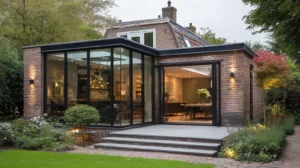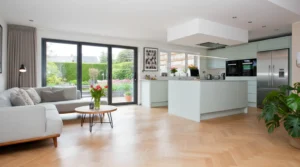Top 5 Eco-Friendly Materials for Your Home Renovation
As a homeowner in the Netherlands, you are likely aware of the importance of reducing your carbon footprint and creating a sustainable living space. One of the most effective ways to achieve this is by using eco-friendly materials in your home renovation project. In this article, we will explore the top 5 eco-friendly materials that you can use to make your home renovation more sustainable and energy-efficient.
Basic Concepts: Understanding Eco-Friendly Materials
Before we dive into the top 5 eco-friendly materials, it’s essential to understand what makes a material eco-friendly. Eco-friendly materials are those that have a minimal impact on the environment, are sustainable, and can help reduce energy consumption. These materials can be made from natural resources, recycled materials, or be designed to be energy-efficient.
Some of the key characteristics of eco-friendly materials include:
- Low carbon footprint
- Sustainable sourcing
- Energy efficiency
- Recyclability
- Low VOC (volatile organic compound) emissions
Top 5 Eco-Friendly Materials for Your Home Renovation
Now that we have a better understanding of eco-friendly materials, let’s take a look at the top 5 materials that you can use for your home renovation project in the Netherlands.
- Bamboo Flooring: Bamboo flooring is a highly sustainable and eco-friendly material that is perfect for Dutch homeowners. It’s made from bamboo grass, which is a highly renewable resource, and can be harvested in as little as 3-5 years. Bamboo flooring is also resistant to moisture, durable, and can withstand heavy foot traffic.
- Recycled Glass Countertops: Recycled glass countertops are made from crushed glass that is mixed with a binding agent and then formed into a solid surface. This material is not only eco-friendly but also highly durable and resistant to heat and scratches. It’s perfect for kitchen countertops and can add a touch of elegance to your home.
- Low-Carbon Concrete: Traditional concrete is a significant contributor to greenhouse gas emissions, but low-carbon concrete is a game-changer. Made from supplementary cementitious materials (SCMs) such as fly ash or slag, low-carbon concrete reduces the amount of cement needed, resulting in a lower carbon footprint. It’s perfect for building foundations, walls, and floors.
- Sustainable Wood: Sustainable wood is harvested from forests that are managed in a way that maintains their ecological integrity. Look for wood products that are certified by organizations such as the Forest Stewardship Council (FSC). Sustainable wood can be used for a variety of applications, including flooring, walls, and furniture.
- Sheep’s Wool Insulation: Sheep’s wool insulation is a natural, eco-friendly material that can help reduce energy consumption and keep your home warm in the winter and cool in the summer. It’s made from natural wool fibers that are resistant to moisture and can help regulate indoor air quality. It’s perfect for insulating walls, floors, and ceilings.
Practical Tips for Using Eco-Friendly Materials
Now that we have explored the top 5 eco-friendly materials, here are some practical tips for using them in your home renovation project:
- Always research the manufacturer and ensure that they follow sustainable practices.
- Consider the entire lifespan of the material, including production, transportation, and disposal.
- Look for materials that are locally sourced to reduce transportation emissions.
- Ensure that the material is compatible with other materials and systems in your home.
- Consult with a professional to ensure that the material is installed correctly and safely.
Conclusion
In conclusion, using eco-friendly materials in your home renovation project is a great way to reduce your carbon footprint and create a sustainable living space. By choosing materials that are sustainable, energy-efficient, and recyclable, you can help minimize the environmental impact of your renovation. Remember to always research the manufacturer, consider the entire lifespan of the material, and consult with a professional to ensure that the material is installed correctly and safely. With these top 5 eco-friendly materials, you can create a beautiful, sustainable, and energy-efficient home that you can enjoy for years to come.
As a homeowner in the Netherlands, you have the opportunity to make a positive impact on the environment by choosing eco-friendly materials for your home renovation project. So, start exploring these materials today and make your home renovation project a sustainable success!








